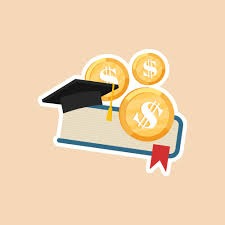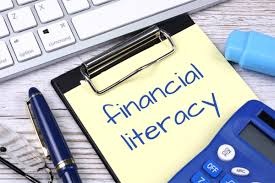Should Financial Literacy Be a Core Subject? Here’s Why It’s Time.
There are things we all need to know to survive — how to read, how to write, how to calculate. That’s why we teach math and language arts from day one. But there’s something else people deal with every single day — money. And yet, for some reason, most students graduate without knowing how to manage it.
They can solve for X but can’t figure out how interest rates work. They know Shakespeare’s metaphors but don’t understand their paycheck stubs. So the question isn’t really whether financial literacy should be a core subject. The real question is why it hasn’t been already.

What Is Financial Literacy, Really?
Financial literacy means knowing how money works — not just in theory, but in your everyday life. It covers budgeting, saving, credit, investing, debt, insurance, taxes. The stuff that decides whether someone’s financially stable or constantly stressed.
It’s not about becoming a Wall Street pro. It’s about understanding what happens when you swipe your card, sign a lease, or take out a student loan.
Right now, most people learn this the hard way. Trial and error. Mostly error.
Why Schools Avoid It (And Why That’s a Problem)
A lot of schools treat financial education like an elective. Optional. Something you might pick up in a random class junior year if the schedule works out. And even then, it’s usually basic. Surface-level.
Part of the issue? People assume kids aren’t ready for it. Or they think parents should handle it. But not every parent knows how to explain compound interest. Some struggle with finances themselves. And even if they do have the knowledge, they might not talk about it.
So kids grow up learning algebra, writing essays — but when it comes to money, they’re on their own.
The Cost of Not Knowing
Look at the numbers. A huge chunk of Americans live paycheck to paycheck. Credit card debt is high. Emergency savings? Rare. A lot of people don’t know how to build credit or what it really means to default on a loan.
And it’s not just about adults. Teenagers rack up debt before they even understand it. Freshman year of college? They’re signing on for tens of thousands in loans without knowing what repayment looks like.
This lack of understanding follows them for decades. Into relationships, jobs, family life. Poor financial choices create stress, and stress messes with everything — health, work, happiness.
All because nobody taught them early enough.
Why It Belongs in the Core Curriculum
Here’s what “core” subjects are supposed to be — essential. Universal. The basics of being an educated person.
Financial literacy fits that. It teaches practical life skills. It connects to math, economics, even psychology. It’s not fluff. It’s survival.
Teaching it early means building habits before bad ones form. When kids learn about saving and budgeting at 13, they’re less likely to fall into debt traps at 23.
Plus, it levels the playing field. Not everyone grows up with access to financial knowledge. Making it part of school gives every student — no matter where they’re from — a fighting chance.
What Would It Look Like?
A good financial literacy class wouldn’t just throw facts at students. It would be hands-on. Relevant. Tied to real life.
Imagine middle schoolers creating budgets for fake jobs. High schoolers comparing credit cards and calculating interest. Learning to read tax forms. Setting savings goals. Understanding insurance. Figuring out what a healthy financial life actually looks like.
It could grow with them, too. Start simple. Get more complex over time. The same way we teach science — from basic biology to chemistry and physics — we can build financial skills step by step.
Pushback and Misunderstandings
Some people say, “We already have too much to teach — we can’t add more.” But financial education doesn’t need to be separate. It can be woven in. Math problems that involve budgets. Social studies that explore economic systems. Group projects that track expenses or plan future goals.
Others say it’s not the school’s job. But schools already teach nutrition, safety, and health. Money management fits right in.
And then there’s the old line: “They’ll figure it out later.” But later is when the damage’s already done.
The Long-Term Impact
Teaching financial literacy isn’t just about money. It’s about independence. It’s about building lives that don’t crumble under stress. It’s about giving people the power to plan, to dream, to thrive.
Students who understand money are more likely to start saving earlier. To avoid debt traps. To invest wisely. They’re also less likely to fall for scams or bad advice.
And let’s be honest — the world’s getting more financially complicated. Digital banks. Crypto. Loans that look friendly but aren’t. If we don’t prepare students, we’re setting them up to fail in a system they don’t fully understand.
Real-World Examples
Some states have started requiring financial education. The results? Promising.
In Georgia, students who took a financial class were more likely to apply for aid, avoid high-interest loans, and start building savings sooner. Similar outcomes in Missouri and Texas. The impact is clear: financial education works when it’s taken seriously.
But until it becomes standard — like English, math, or science — most students still won’t get it.
Final Thought: It’s Not a Luxury — It’s a Necessity
Financial literacy shouldn’t be reserved for the lucky few who get great advice or stumble into a helpful YouTube video. It should be part of how we raise people to function in the world.
And that means making it core. Not optional. Not someday. Now.
Because when students leave school, they enter a world that runs on money. It’s time we stop pretending they’ll just figure it out — and start actually teaching them how to.




